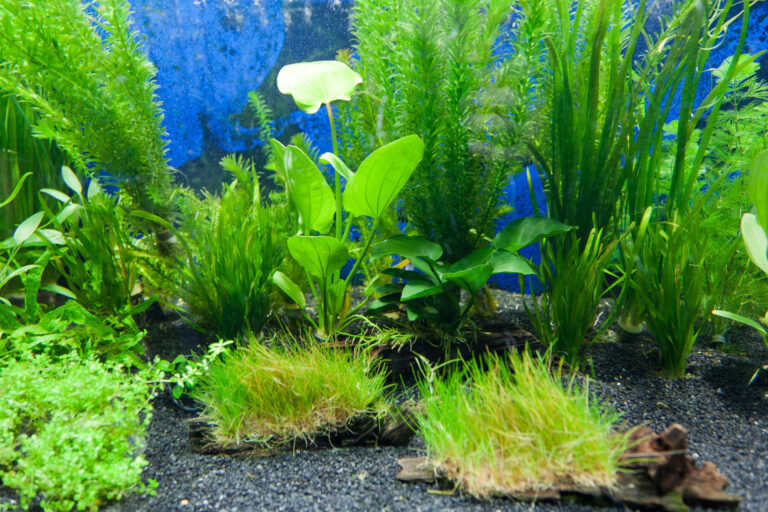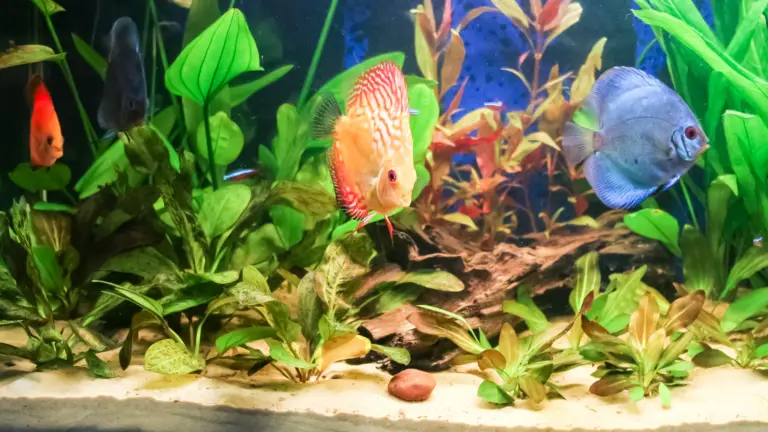Floating Plants For Freshwater Aquarium
Floating Plants for Freshwater Aquarium: Enhancing Beauty and Water Quality
Have you ever wondered how you can add some graceful beauty to your freshwater aquarium while also improving water quality? The answer lies in incorporating floating plants into your aquarium setup. These aquatic beauties not only create a visually stunning display but also offer numerous benefits for the overall health of your aquarium ecosystem.
Why Choose Floating Plants for Your Freshwater Aquarium?
Floating plants are an excellent choice for a freshwater aquarium as they offer a range of advantages that can significantly enhance your aquatic environment:
1. Natural Filtration: Floating plants play a vital role in maintaining water quality by absorbing excess nutrients, like nitrates and phosphates, which can lead to algae growth. These plants act as natural filters, helping to prevent water pollution and maintaining a healthy balance in your aquarium.
2. Oxygenation: Just like land plants, floating plants undergo photosynthesis and release oxygen into the water. This process boosts the oxygen levels in your aquarium, keeping your fish and other aquatic inhabitants happy and healthy.

3. Shade and Protection: Floating plants provide shade and create hiding spots for your fish. This natural cover helps to reduce stress levels and provides a sense of security to your aquatic pets.
4. Algae Control: Since floating plants thrive in well-lit environments, they compete with algae for light. By creating shade and outcompeting algae, these plants can help control and reduce the growth of unwanted algae in your aquarium.
Choosing the Right Floating Plants for Your Freshwater Aquarium
When it comes to selecting the perfect floating plants for your freshwater aquarium, there are several beautiful and popular options to consider. Each plant has its unique characteristics and growth requirements, so it’s essential to choose plants that are compatible with your existing setup and care routine. Here are some top choices to explore:
1. Amazon Frogbit (Limnobium laevigatum): This plant features round leaves and delicate white roots that dangle beneath the water’s surface. Amazon Frogbit is easy to care for, making it a popular choice for beginners. It also provides ample shade and creates a lush, green carpet on the water’s surface.
2. Duckweed (Lemnaceae): Duckweed is one of the smallest floating plants and is known for its rapid growth. It reproduces quickly, creating a dense mat of foliage. While some aquarium enthusiasts dislike its prolific nature, others appreciate it for its ability to absorb excess nutrients effectively.
3. Water Lettuce (Pistia stratiotes): With its velvety, light green leaves and rosette-like arrangement, Water Lettuce offers an aesthetic appeal to any aquarium. It is a hardy plant that multiplies quickly, making it ideal for larger aquariums.
4. Salvinia (Salvinia natans): Salvinia is a floating fern with bright green, triangular leaves. It forms intricate root systems that provide an excellent hiding place for fry and small fish. Salvinia is well-known for its rapid growth and ability to reduce nitrate levels in the water.
Tips for Successfully Cultivating Floating Plants
While floating plants are generally low-maintenance, a little extra care and attention can help ensure their optimal growth and health. Consider the following tips to cultivate your floating plants successfully:
1. Lighting: Floating plants require bright, indirect lighting. Position your aquarium near a source of natural light or invest in high-quality aquarium lights that mimic natural sunlight. Keep in mind that excessive or insufficient light can affect plant growth.
2. Nutrient Levels: Floating plants feed on excess nutrients in the water, but they also require some nutrients to thrive. Regularly test the water parameters and add aquarium-specific fertilizers, as needed, to provide essential nutrients for healthy growth.
3. Water Movement and Aeration: While floating plants appreciate calm water, a gentle water movement and proper aeration are important to maintain optimal oxygen levels. Consider using a gentle air pump or aquarium filter to keep the water circulating gently.
4. Temperature and pH: Ensure that the temperature and pH levels in your aquarium are suitable for the specific floating plant species you choose. Most floating plants prefer slightly acidic to neutral pH levels and water temperatures between 70-80°F (21-27°C).
Frequently Asked Questions
Q: Do floating plants require any special care?
A: Floating plants are relatively low-maintenance, but they do require adequate lighting, nutrient levels, and water movement. Regular pruning may also be necessary to prevent overcrowding.
Q: Can floating plants coexist with other fish and plants in the aquarium?
A: Yes, floating plants can coexist with other fish and plants in the aquarium. In fact, they offer numerous benefits to the entire ecosystem by improving water quality and providing natural cover.
Q: Can floating plants be propagated?
A: Yes, many floating plants can be easily propagated through division or separation. Regularly thin out the excess growth and share it with other aquarium enthusiasts or use it to expand your own aquascape.
Final Thoughts
Incorporating floating plants into your freshwater aquarium is an excellent way to add beauty, improve water quality, and create a natural and harmonious environment for your aquatic pets. Whether you choose Amazon Frogbit, Duckweed, Water Lettuce, or Salvinia, these plants bring numerous benefits to your aquarium while delivering a visually stunning display. Take the plunge and introduce some floating greenery into your aquarium, and get ready to enjoy the amazing transformation it brings. Happy aquascaping!





